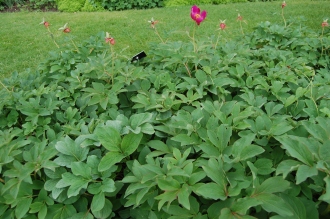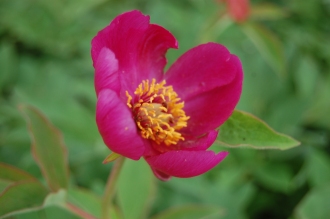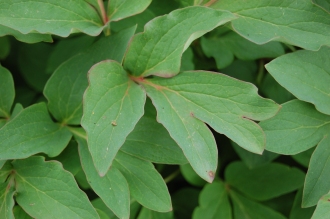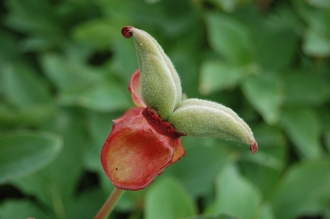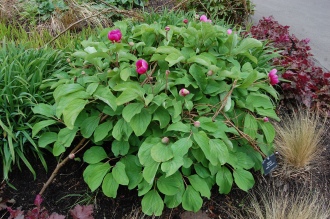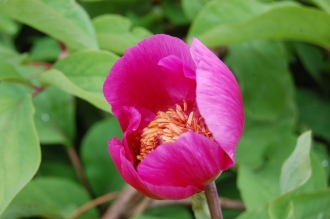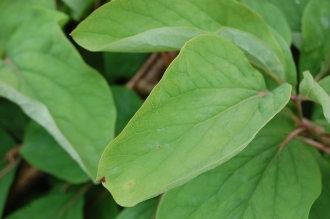Position: Full sun to partial shade
Flowering period: Early summer
Soil: Moist, well drained
Eventual Height: 80cm
Eventual Spread: 80cm
Hardiness: 5a, 5b, 6a, 6b, 7a, 7b, 8a, 8b, 9a
Family: Paeoniaceae
Paeonia ‘Claire de Lune’ is a large flowered deciduous herbaceous perennial. Its dark green leaves are biternate with entire margins up to five lanceolate leaflets and are up to 15cm long. Its leaflets are elliptic with entire margins and up to 11cm long. Its fragrant very pale yellow flowers have yellow stamens, are single, appear in the leaf axis terminally and are up to 13cm across. Its roots are tuberous.
Paeonia ‘Claire de Lune’ is a cross between Paeonia lactiflora and Paeonia mlokosewitschi.
The etymological root of the binomial name Paeonia is named after Paeon, a Greek physician of the gods who, in mythology, was changed into a flower by Pluto.
The landscape architect may find Paeonia ‘Claire de Lune’ useful as part of a herbaceous planting scheme with its attractive large fragrant flowers. This perennial is not attractive to deer or rabbits.
Ecologically, Paeonia ‘Claire de Lune’ flowers are attractive to pollinating insects.
Paeonia ‘Claire de Lune’ prefers moist, deep, humus rich, well-drained soils. It tolerates most pH of soil. It will not tolerate dry soils.
Paeonia ‘Claire de Lune’ requires little maintenance. Once planted the roots of this plant should not be disturbed.
![]()
Landscape Architecture



